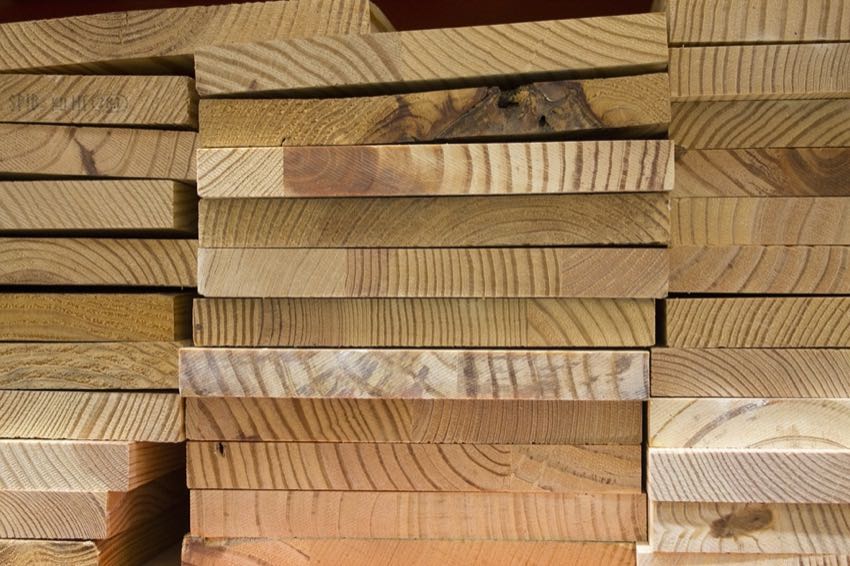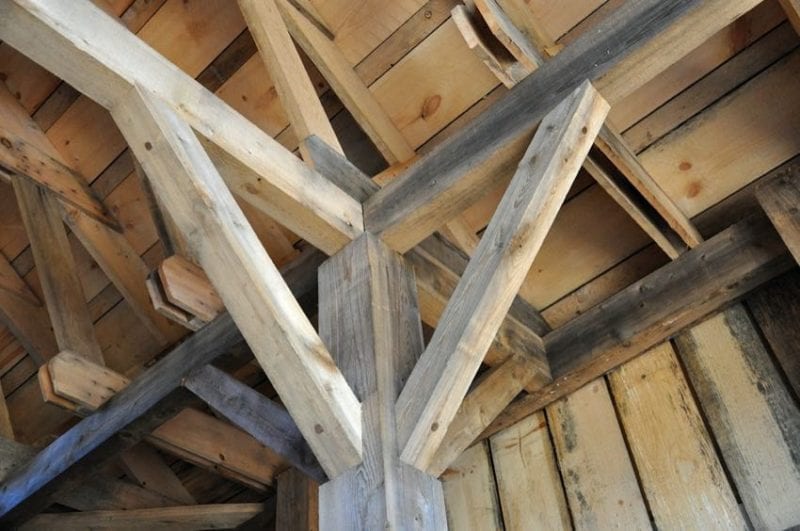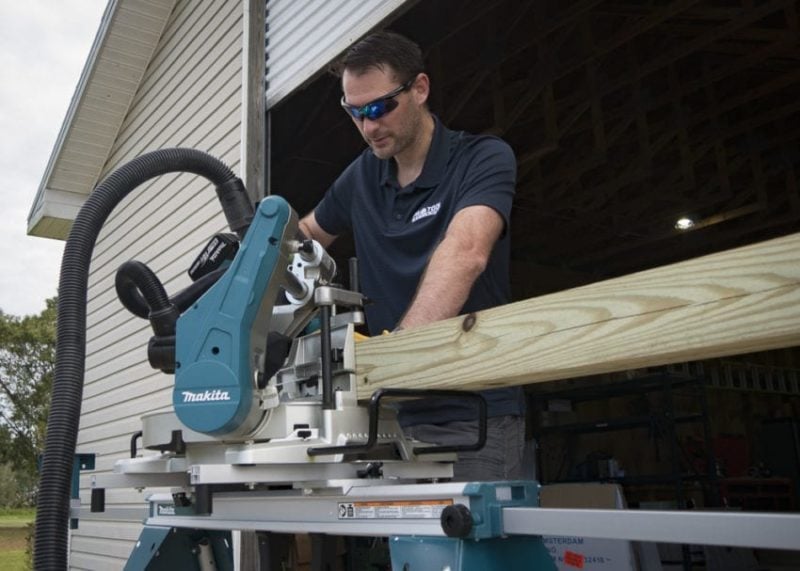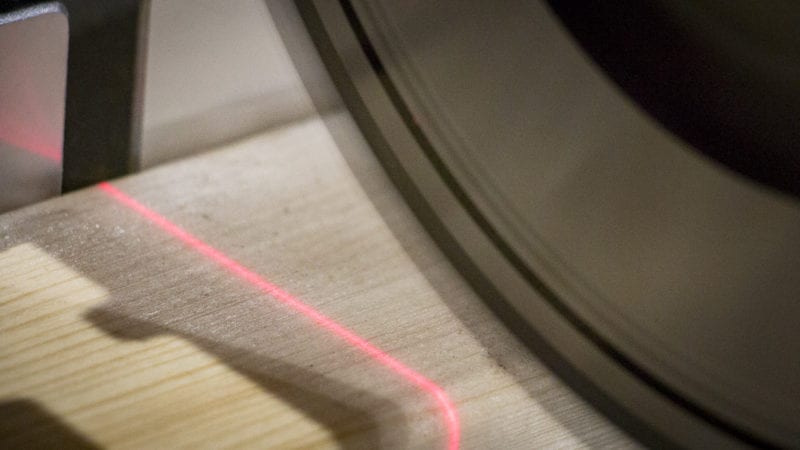Having done so much with this material, it wasn’t until a reader asked what is pressure treated wood that we realized people honestly didn’t know what made it different or better than regular lumber. So like all insane people, we set out to write an article to answer every question about pressure treated wood you can ask. Use the table of contents to get directly to whatever question YOU have regarding this universal building material.
Table of Contents
- What is Pressure Treated Wood?
- How to Tell if Wood is Pressure Treated
- The Process of Pressure Treating Wood
- What Chemicals are in Pressure Treated Wood?
- Is Pressure Treated Wood Safe?
- Is PT Stronger Than Regular Wood?
- How Long Does Pressure Treated Wood Last?
- Which Pressure Treated Wood is Best for Resisting Insects?
- How Much Chemical is Actually in Pressure-Treated Wood?
- When Must You Use PT in Construction?
- When Can You Stain Pressure-Treated Wood?
- Can Pressure Treated Wood Be Painted?
- Wrapping It Up
What is Pressure Treated Wood?
The big picture: Pressure-treated wood (PT) infuses chemicals into lumber—using a depressurization and pressurization process. Pressure treated lumber does a better job of resisting decay and insects that would quickly destroy most untreated wood. Professionals and consumers use PT for anything from general construction to decks, fencing, and retaining walls.
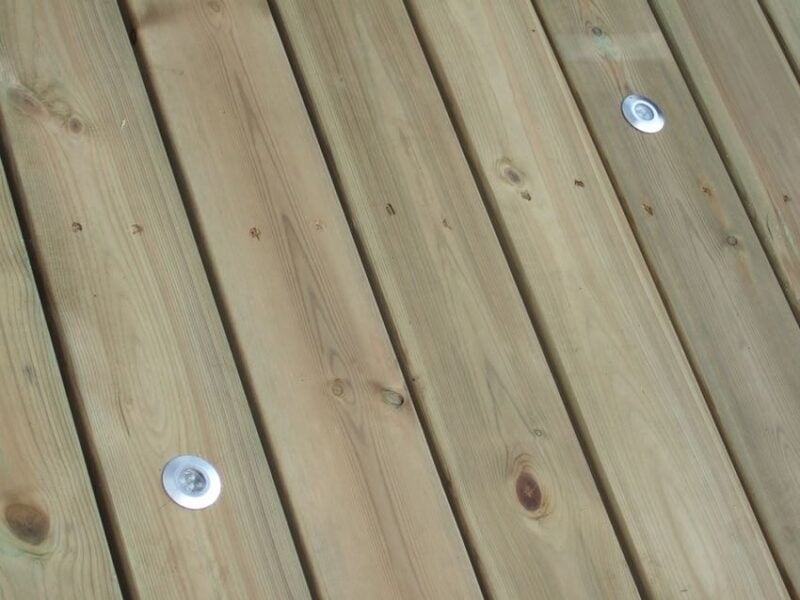
How to Tell if Wood is Pressure Treated
If you want to know how to tell if wood is pressure treated you have several ways of doing so:
- For raw lumber, check for a tag on the end. Most pressure-treated lumber has a tag stapled to the end that tells you what kind of material you have.
- Similar to the above—look for any stamps or markings on the wood that indicate it is pressure treated. You may find something that says “PT” or even “pressure-treated lumber”.
- Pressure treated wood also has a greenish tint to it. Look for that as it differs dramatically from standard yellow pine and other woods.
- When identifying wood on an existing project, you can (or should) find pressure treated wood on anything that touches the ground. That includes 4×4 fence posts, floor joists, decking, fencing, etc.
- Some wood, like Douglas fir, doesn’t readily absorb chemicals as easily as southern yellow pine. Manufacturers add small incisions or tiny markings all over them designed to help the chemicals permeate the surface into the wood.
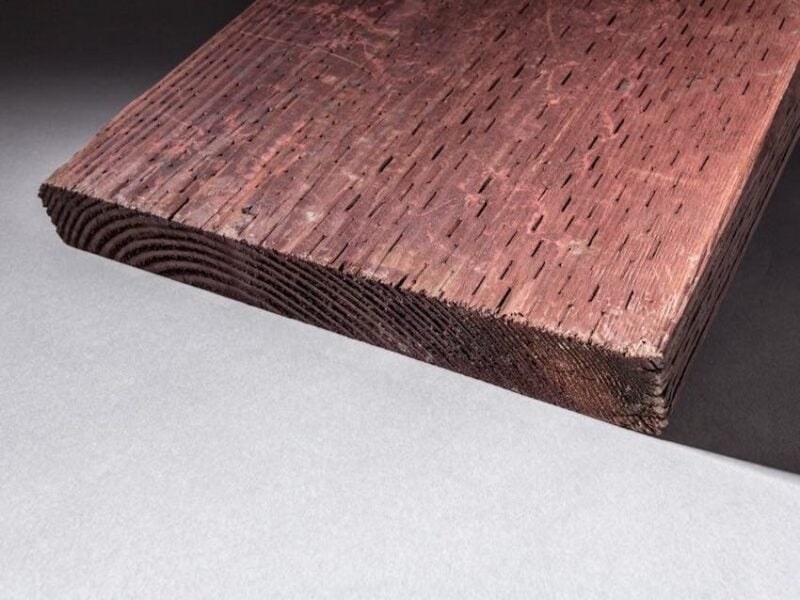
The Process of Pressure Treating Wood
Manufacturers pressure treat wood by placing it into a large cylinder or chamber. They vacuum out the air and add chemicals. They then place it back under high pressure. Under these conditions, a preservative solution penetrates or absorbs deep into the wood fibers. This provides long-lasting protection against rot, decay, and insect damage.
That pressurized stage is where the process “pressure-treated” gets its name. Adding pressure to the mix forces the chemical treatment deeper into the wood than it could go with simple soaking.
The treated wood can air dry in most cases. However, a better process involves using a kiln to bake it. When the wood requires the extra step of kiln drying, the price goes up accordingly. We prefer kiln-dried pressure-treated wood in most cases.
What Chemicals are in Pressure Treated Wood?
Classic pressure treated lumber makes use of CCA—chromated copper arsenate. That’s chemistry-speak for chromium, copper, and…arsenic. Wait…arsenic? Sounds like something you really want to spend time swinging on, huh?
However, in late 2003, the EPA made some changes to keep your kids’ playset and your front porch swing a little less toxic. They introduced other options for pressure treated lumber including alkaline copper quat (ACQ) and copper azole (CA). In our experience, PT disintegrates a lot more quickly as a result.
That’s a problem since the entire reason we use pressure-treated lumber is to make sure what we build lasts longer. Fortunately, CCA still remains in play for non-residential use.
More About Using Copper Instead of Arsenic
ACQ (alkaline copper quat) gets used as the most popular alternative to arsenic. CC (ammoniacal copper citrate), ACC (acid copper chromate), and CA-B (copper azole) also pop up as chemical compounds for pressure-treated lumber.
It doesn’t take long to see the trend in residential PT. Arsenic is out, and more copper is the key to pressure-treating lumber. Copper helps prevent breakdown by an assortment of insects and fungi. Supposedly, copper also resists breaking down into the soil and environment around it.
More than just a trend, the Environmental Protection Agency (EPA) actually banned the use of arsenic in residential applications in 2003. They did this in response to concerns about the safety of arsenic-treated wood.
Is Pressure Treated Wood Safe?
As mentioned above, pressure-treated wood used in residential applications has lacked arsenic since 2003. Instead, it contains a form of copper. If you’re comfortable holding pennies, you probably shouldn’t worry about the makeup of chemicals used in modern pressure-treated lumber.
It’s also unlikely that the copper or ACQ content would leach into the soil unless you have a phosphorous deficiency. In either case, PT shouldn’t raise any direct health or safety concerns. We see it frequently used in playgrounds, pool decks, and even raised garden beds.
Is PT Stronger Than Regular Wood?
In a word—no. Pressure-treating merely conditions the wood for use in ground-contact situations. It helps it resist rotting from water contact and other environmental materials that cause decay in normal wood. This may seem odd since we often see tool guys cutting on pressure-treated wood.
The reason often has to do with the fact that the presence of water makes the wood feel denser and heavier. That makes it a tad more difficult to cut at times—at least until it fully dries out. Structurally, however, pressure-treated lumber doesn’t outperform white or yellow pine.
How Long Does Pressure Treated Wood Last?
We can’t give you a single answer to how long pressure treated wood will last, but we can help you understand the factors that contribute to decay.
With proper care and regular sealing, it can last up to several decades. Installation methods also affect longevity. For example, coating the ends of 4×4 posts with a waterproof sealer before cementing them in significantly helps extend life. You can dramatically help fences by applying regular treatments of sealer—the same goes for decking boards.
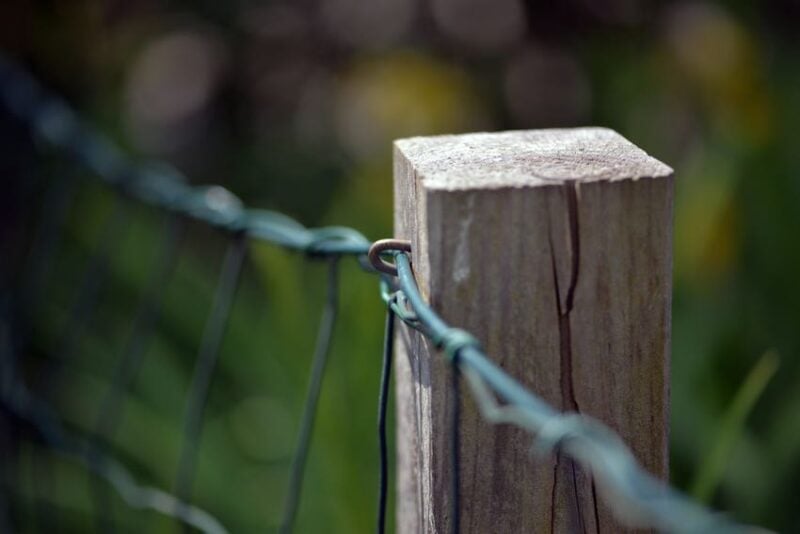
Another helpful tip is selling the tops of joists when setting floor joists close to the ground. For low decking applications, this can mean the difference between a deck lasting 10-15 years and one lasting for 30 years or more.
Direct sunlight and water exposure also contribute to the decay of pressure-treated wood. When you can avoid either of these, that helps extend their life.
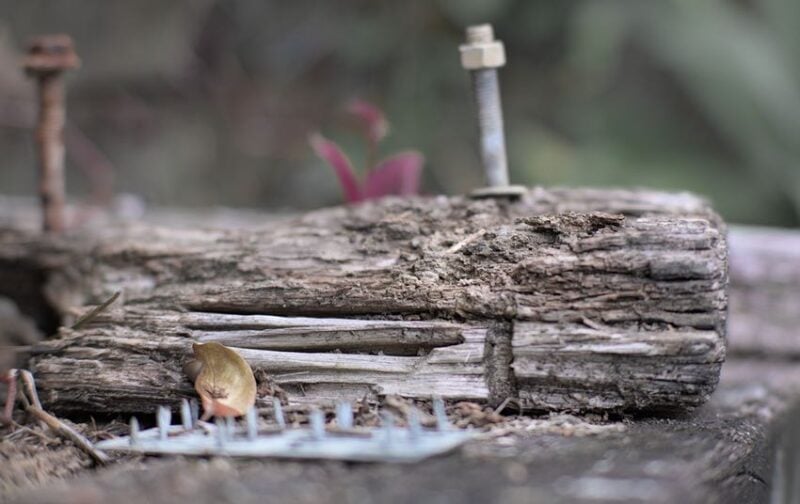
Which Pressure Treated Wood is Best for Resisting Insects?
Cedar has always resisted insects naturally. It contains natural oils and tannins that make it naturally resistant to both termites and carpenter ants. If anyone talks about “pressure-treated cedar” they more likely either mean plain cedar or PT with a cedar “tone”. Comparing cedar vs pressure-treated wood for outdoor or ground contact applications, pressure treated wins hands-down. It provides more protection and just as much insect resistance.
The same applies to redwood. You don’t typically pressure-treat redwood, but it does make a fantastic (though very expensive) building material. Denser than pine, fir, or even oak, redwood carries some natural resistance to insects and weather. Pressure treated wood simply costs less and you can often stain it (eventually) to look similar.
In addition to using natural cedar and redwood, some PT products have been treated with insecticides. This helps them do an even better job of protecting against insects.
How Much Chemical is Actually in Pressure-Treated Wood?
The chemicals used in pressure-treated wood don’t do us any favors if we ingest it. That’s why you don’t want to burn PT or breathe in sawdust when cutting it. You might find it interesting to know that there are between 0.40 and 0.60 pounds of chemicals per cubic foot of wood, depending on the application.
That’s not a small amount.
When Must You Use PT in Construction?
Codes vary around the country, but in general, you should use pressure-treated lumber in the following scenarios:
- Ground contact or potential ground contact (fence posts, retaining walls, etc)
- Floor joists and sub-flooring within ~12-18-inches of the ground
- Affixing wood to concrete of any kind (walls, foundations, etc)
- Wherever else your building codes require it!
When Can You Stain Pressure-Treated Wood?
You don’t want to stain pressure treated wood until it fully dries. That can take up to 6 months provided you aren’t living in Florida during the daily summer rains. As the wood dries out, the chemicals break down enough to allow the stain to better adhere.
You can tell whether or not the PT lumber will take stain by using the water test. If water continues to bead up on the surface, you need to wait longer. Once it absorbs water droplets, you should be ready to stain pressure treated wood. As with any materials, prep by cleaning the surface before applying a stain.
Can Pressure Treated Wood Be Painted?
You can absolutely paint pressure treated wood. As with stains, you just have to ensure the material is fully dried out and ready. Wet lumber means it has a lot of movement left in it. Paint tends to crack and peel when the underlying wood shrinks and contracts. We also recommend priming any pressure-treated wood before painting it.
Finally, don’t be surprised if you need to go back after a few years and give it a fresh coat of paint. If you opt for stain, seal it every year to help maintain the look over time.
Wrapping It Up
So there you have it. The next time someone asks about PT you’ll be the smartest guy in the room. And then your friends, impressed by the depth of your knowledge, will have no choice but to buy you a drink out of sheer awe…
Or not.

